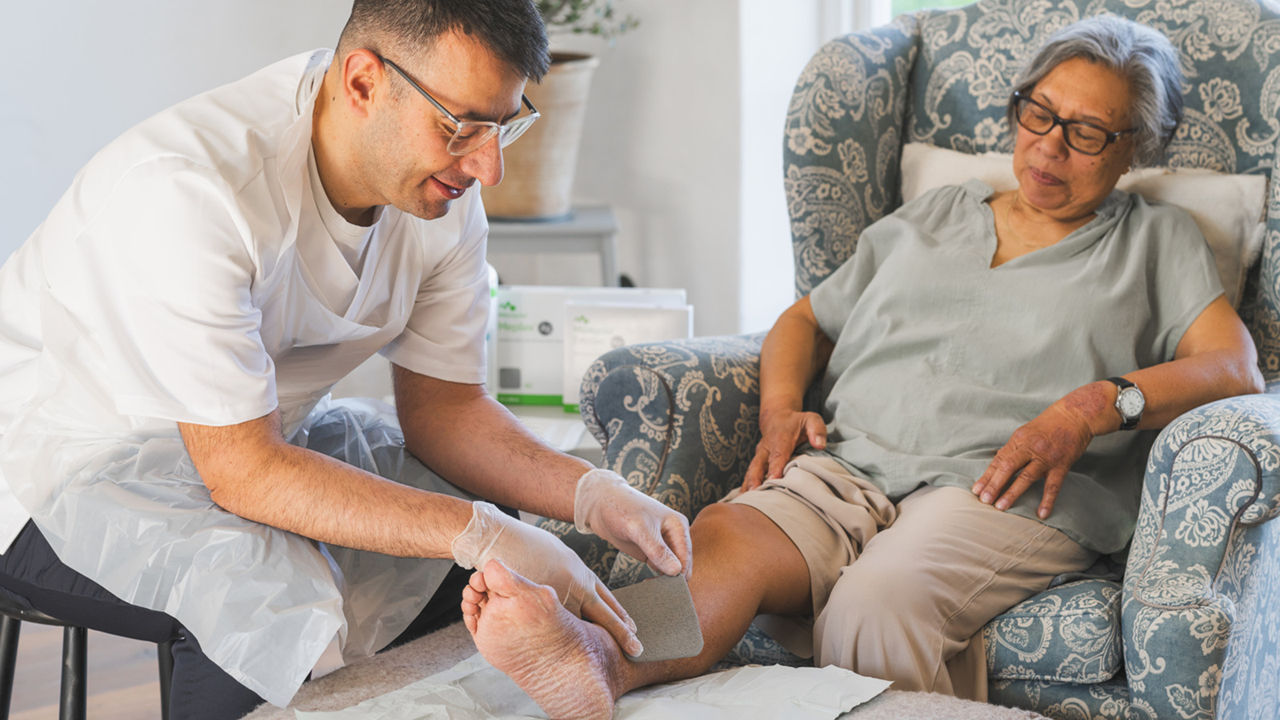Wound Infection FAQs
FAQs: How to tell if your wound is infected.

How can you tell if your wound is healing normally or if it’s infected? What are the signs of an infected wound? With International Stop Wound Infection Day scheduled for Thursday 16 October this year, we answer your questions to help you identify and combat infected wounds.
Q: Is my wound infected or just healing?
A: It can be difficult to distinguish between an infected wound and one that is simply healing. Some redness and swelling are normal during the healing process and should gradually improve. However, if these symptoms worsen or you notice other signs of infection — such as pus, increased pain, or an unpleasant odour—it may indicate an infection1,2. When in doubt, it is always best to seek medical advice.
Q: How do I know if my wound is infected?
A: It's important to recognise the signs of a wound infection so you can get timely treatment. Look out for increased redness, swelling, warmth around the wound, and the presence of pus. You might also experience pain that gets worse over time, a bad smell, or even a fever. If you notice any of these signs, it is advisable to consult a healthcare professional.
Q: Is my wound supposed to be yellow?
A: A yellowish appearance in a wound can be due to fibrin, a protein naturally involved in healing3. However, if the yellow substance is thick and has yellowish discharge with a bad smell, it could be pus, indicating an infection1,3. Consult your healthcare provider if you have any concern that there are signs of infection. They can help you determine the course of action.
Q: Is my wound septic?
A: Sepsis is a serious and potentially life-threatening condition that happens when an infection spreads into the bloodstream. Symptoms include fever, chills, rapid breathing and confusion. If you suspect sepsis in yourself or anyone else, seek emergency medical attention immediately3.
Q: Is my wound infected if it hurts?
A: Pain is common in both healing and infected wounds. However, if the pain gets worse over time or comes with other signs of infection like redness, swelling, or pus, it might be an infection3. Consult your healthcare professional if you have any concerns about your wound.
Q: Is my wound infected if it smells?
A: A bad smell coming from a wound is often a sign of infection, usually due to bacteria and pus3. If your wound smells bad, it's important to seek medical advice. Your healthcare professional will determine the best course of treatment.
Q: What can I do to prevent my wound from becoming infected?
A: It’s important to realise that not all wounds need to be treated with antibiotics. In fact, health professionals are now trying to avoid overusing them to minimise the problem of antibiotic resistance1,3. Your healthcare professional may recommend an antimicrobial wound dressing rather than oral antibiotics. Only use antibiotics if your health professional has recommended them for your wound.
You can prevent your wound from becoming infected by treating it with effective wound care solutions. Mölnlycke® offers a range of products designed to support healing and prevent infections. Consult with your healthcare professional who may recommend the following wound management strategies. First, irrigate (flush out) the wound with an irrigation solution such as Granudacyn®, designed for the cleansing and irrigation of all acute and hard-to-heal wounds of any depth, such as diabetic foot ulcers, leg ulcers, pressure injuries, surgical wounds and partial-thickness burns, as well as cuts and abrasions4.
If your wound is infected, your healthcare professional may recommend an antimicrobial dressing that contains silver, as silver ions have been shown to be effective against bacteria and a range of other microorganisms5,6. Usually, these dressings need to be used under the supervision of a healthcare professional, so always remember to seek professional advice.
Granudacyn solution can be used by lay persons under the supervision of Healthcare Professionals. If you are concerned about your wound, please contact your Healthcare Professional.
If you are concerned about your wound, please contact your Healthcare Professional.
ALWAYS READ THE LABEL AND INSTRUCTIONS FOR USE
IF SYMPTOMS PERSIST CONTACT YOUR HEALTHCARE PROFESSIONAL
References:
- Medical News Today. How to recognize and treat an infected wound. Available from:
https://www.medicalnewstoday.com/articles/325040#prevention-and-treatment
- NHS UK. Identifying a wound infection. Available from:
https://www.uhsussex.nhs.uk/resources/identifying-a-wound-infection/
- Swanson T, Ousey K, Haesler E, Bjarnsholt T, Carville K, Idensohn P, Kalan L, Keast DH, Larsen D, Percival S, Schultz G, Sussman G, Waters N, Weir D. IWII Wound Infection in Clinical Practice consensus document: 2022 update. J Wound Care. 2022;31(Suppl 12):S10–S21. doi:10.12968/jowc.2022.31.Sup12.S10
- Mölnlycke Health Care. Ready for the Challenge: Antimicrobial dressings range brochure. 2024.
- Leaper D, Keast D, Ayello EA, Carville K, Fletcher J, Lindholm C. Appropriate use of silver dressings in wounds: An expert working group consensus. London: Wounds International; 2012.
- Khansa I, Schoenbrunner AR, Tuan TL, Janis JE. Silver in wound care – friend or foe?: a comprehensive review. Plast Reconstr Surg Glob Open. 2019;7(8):e2390.

